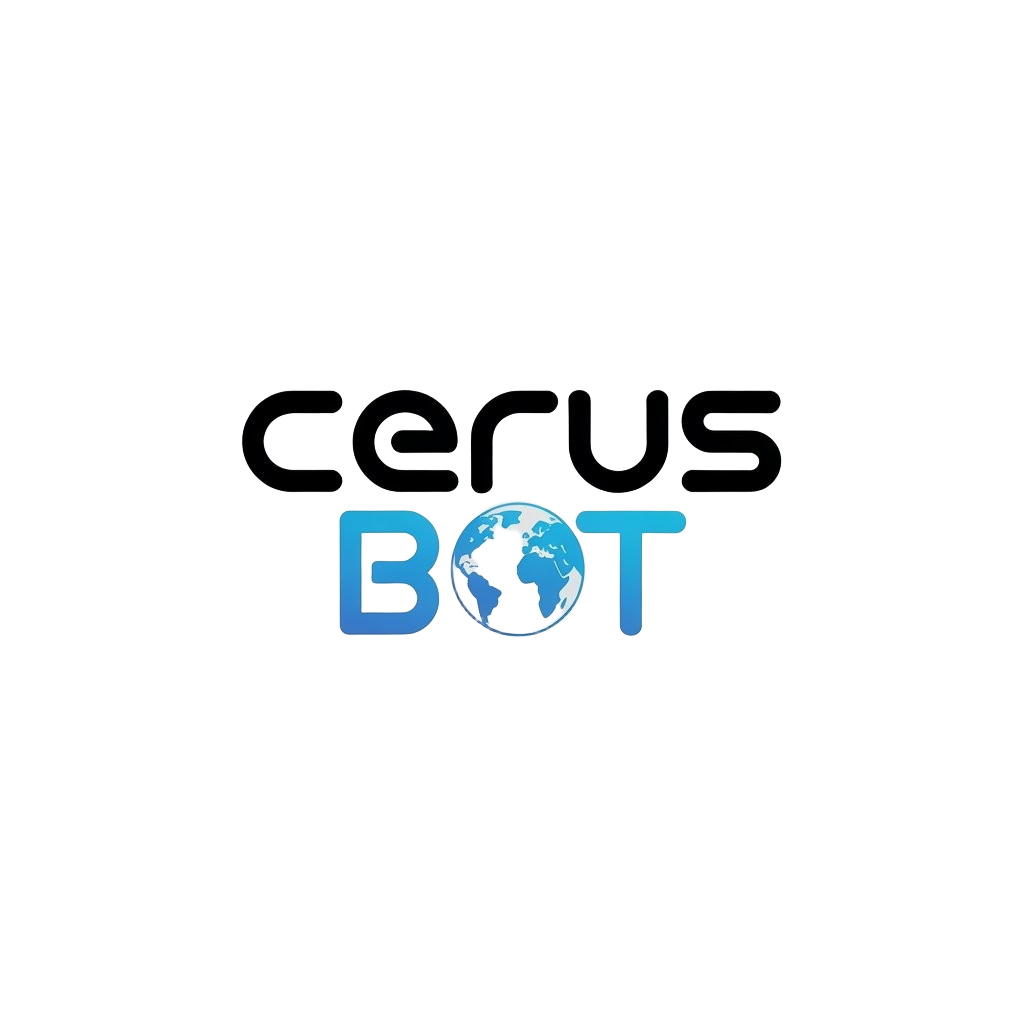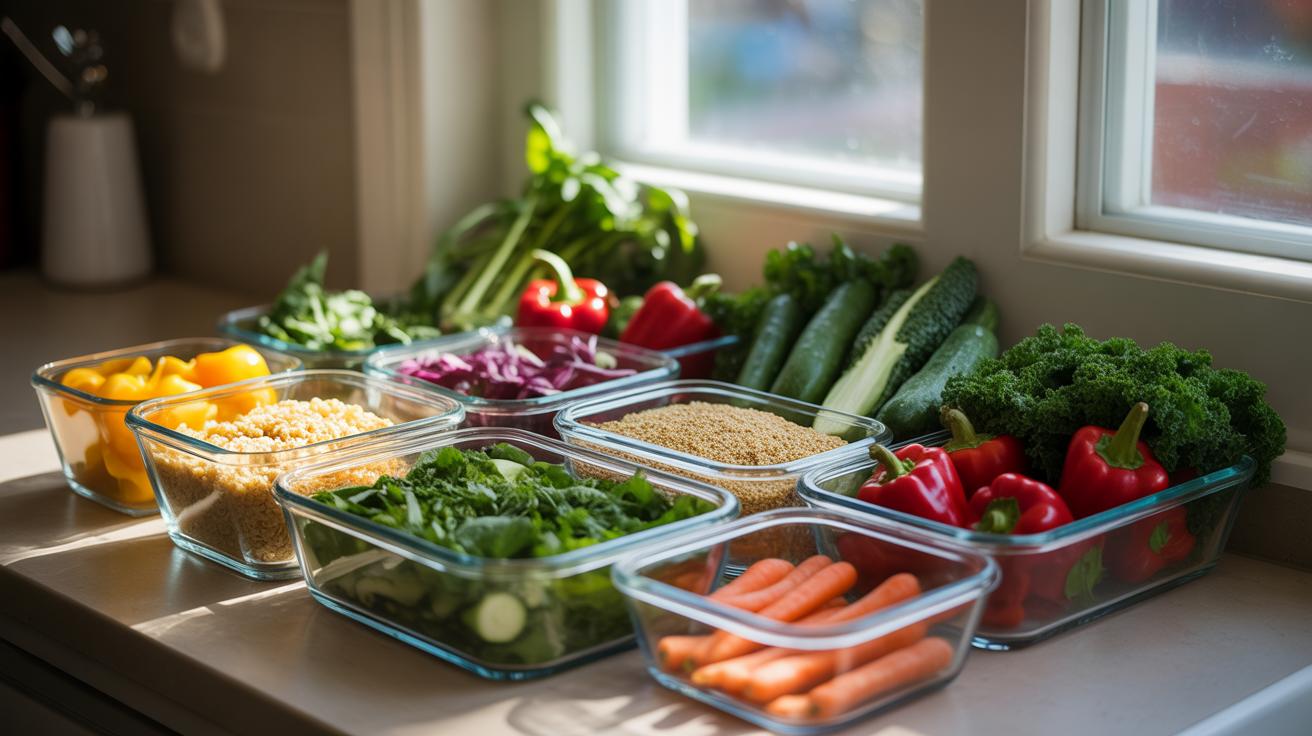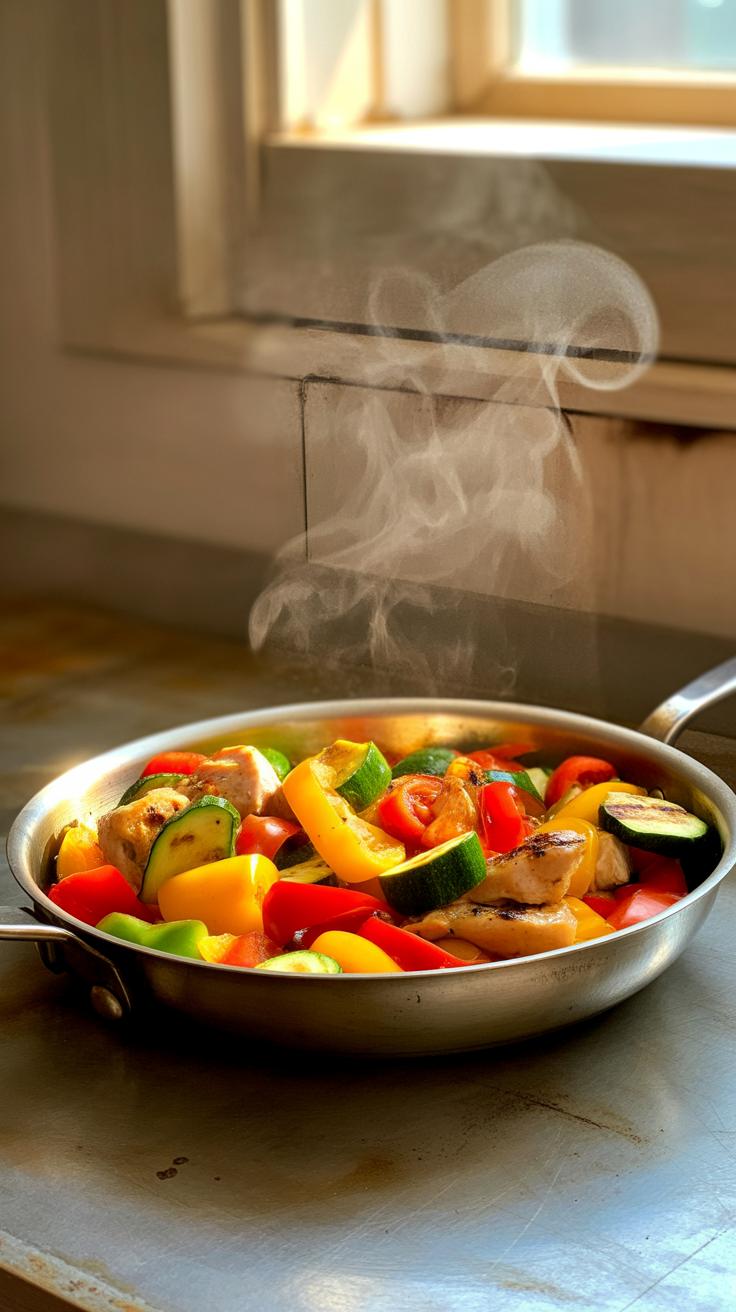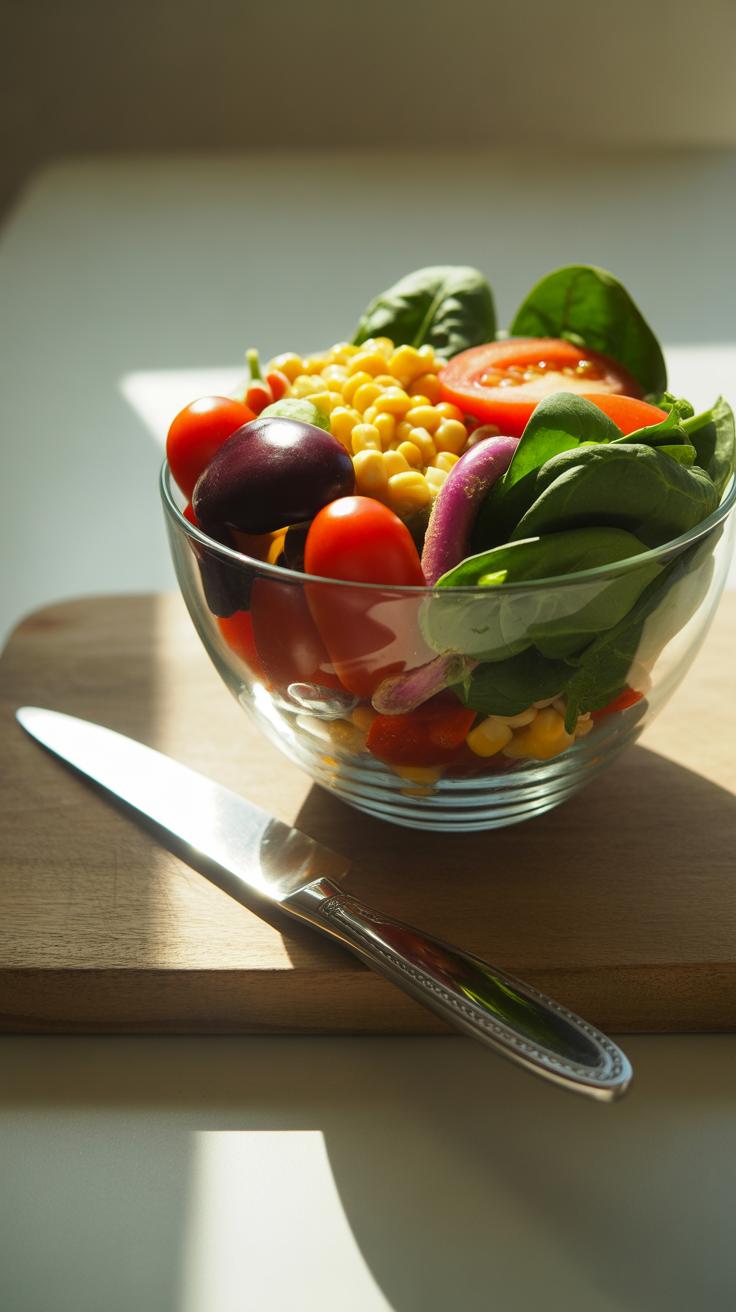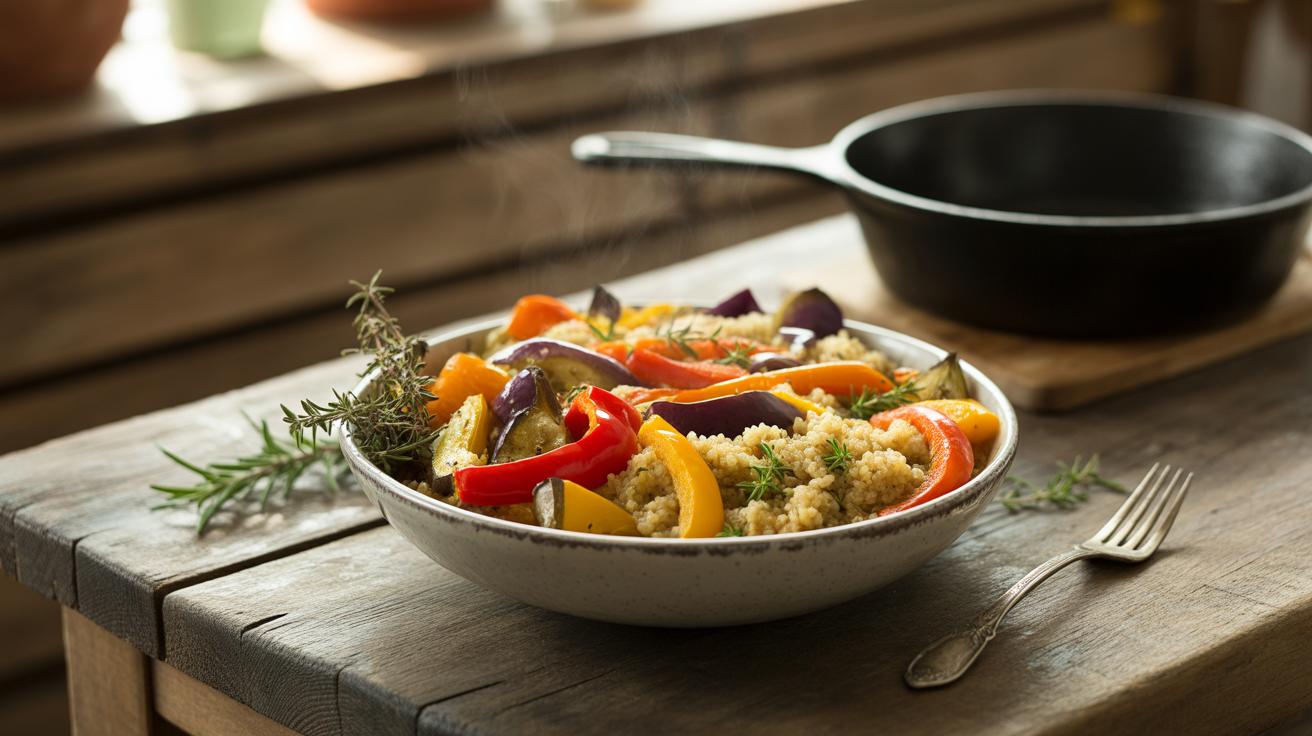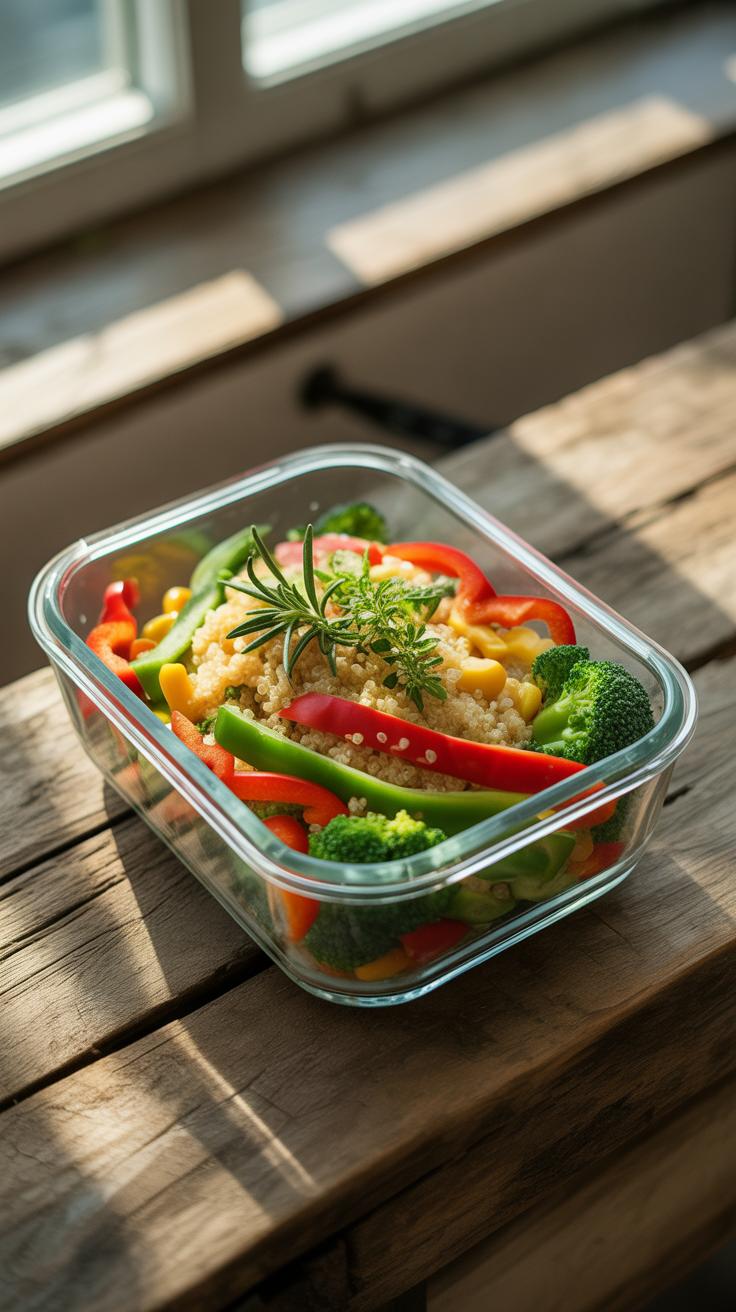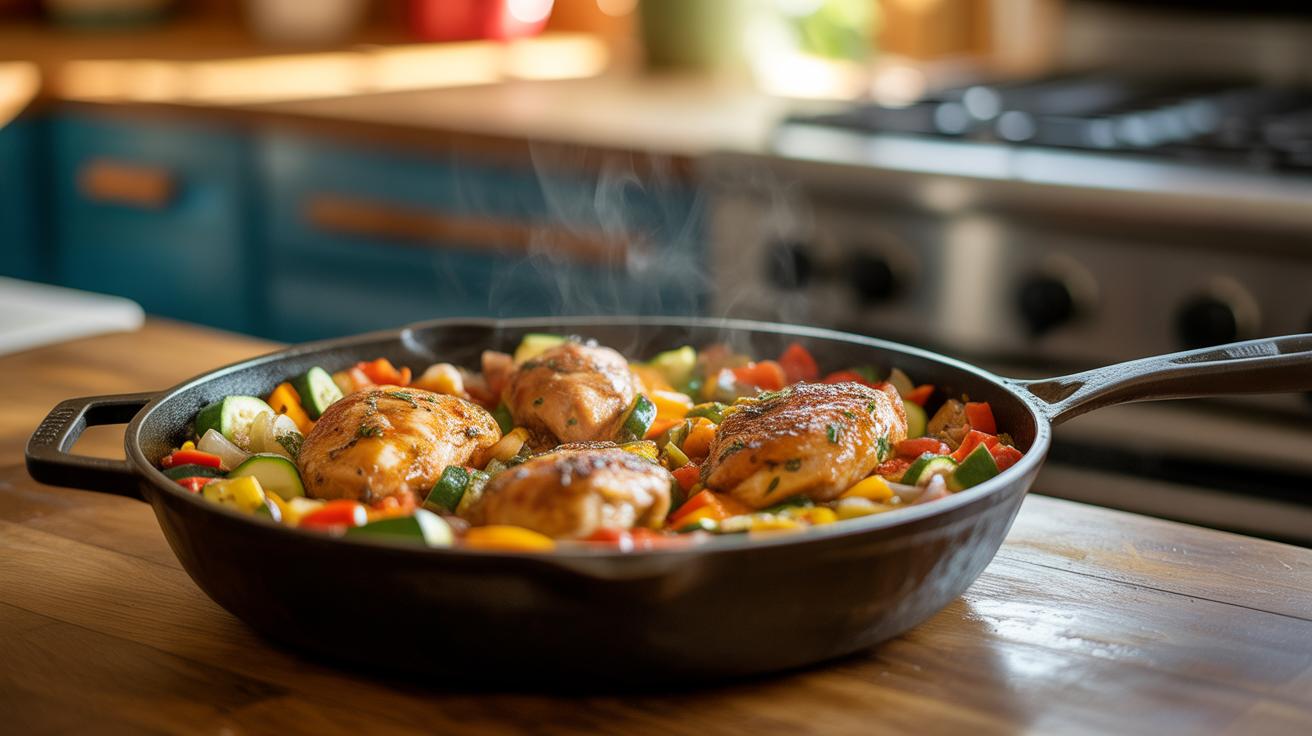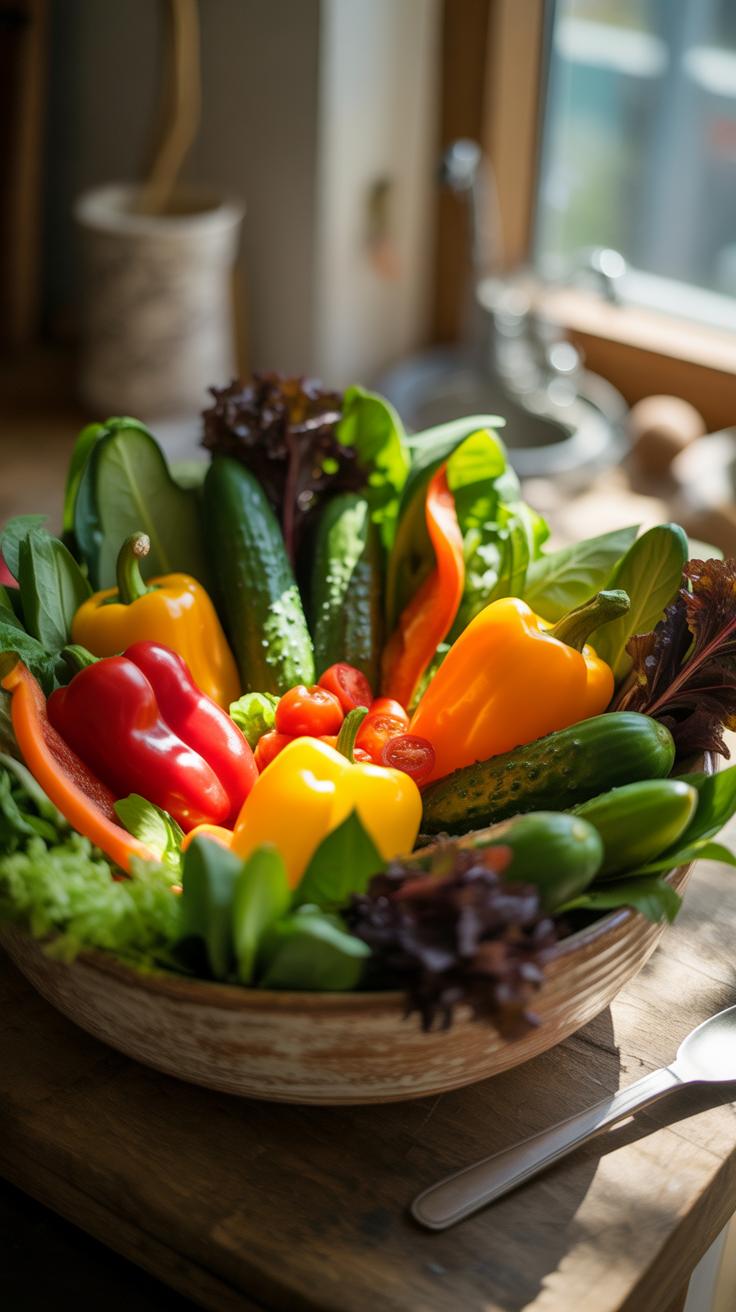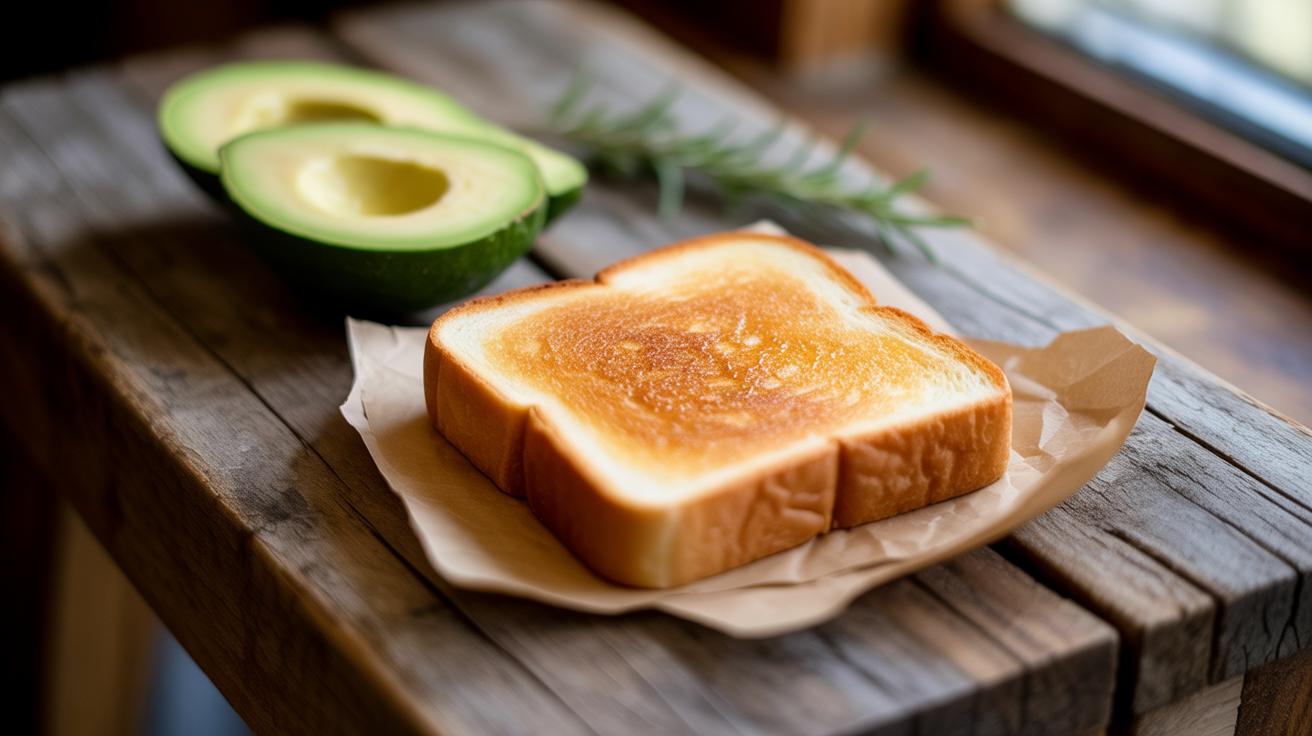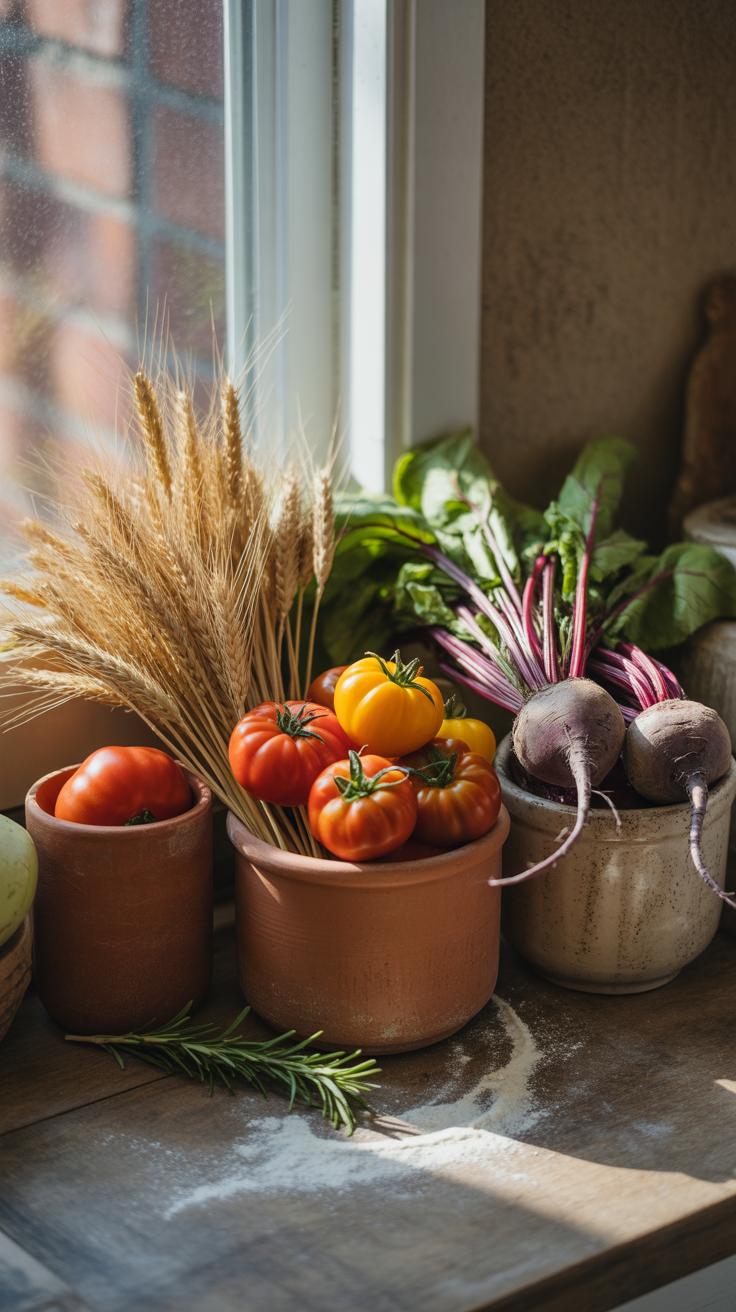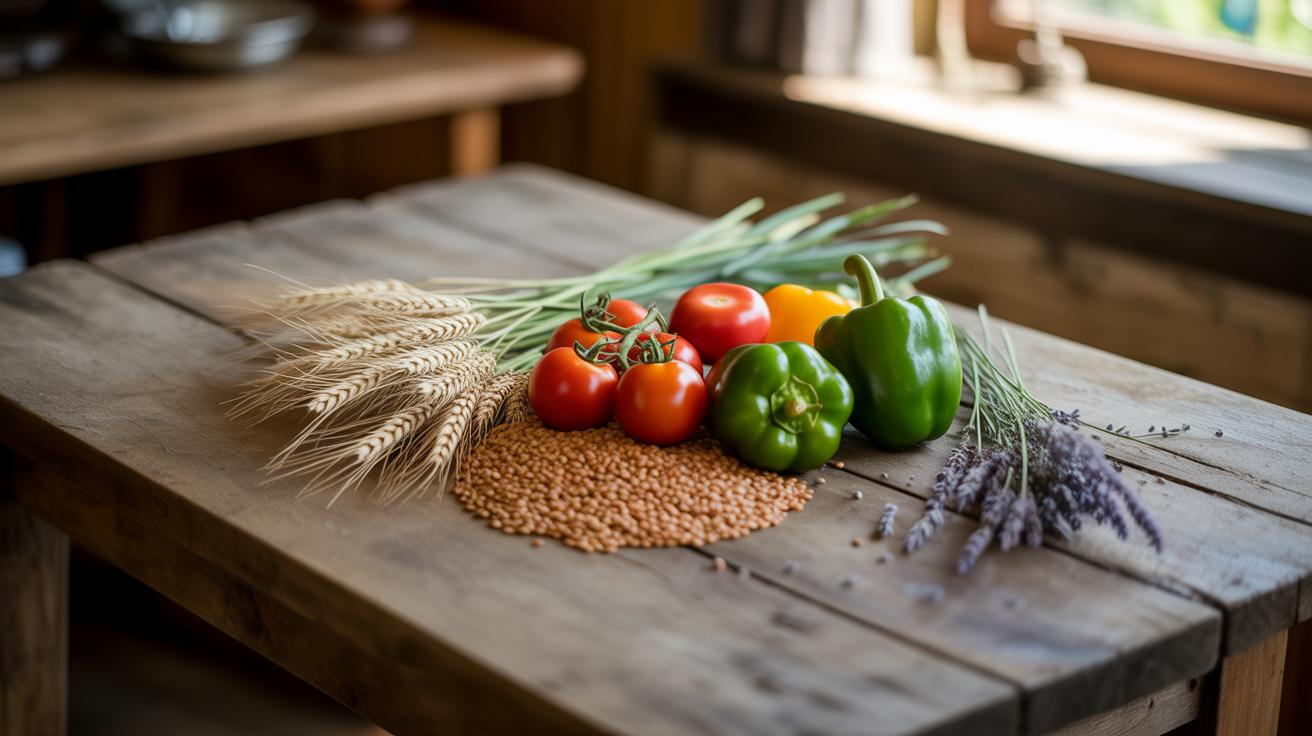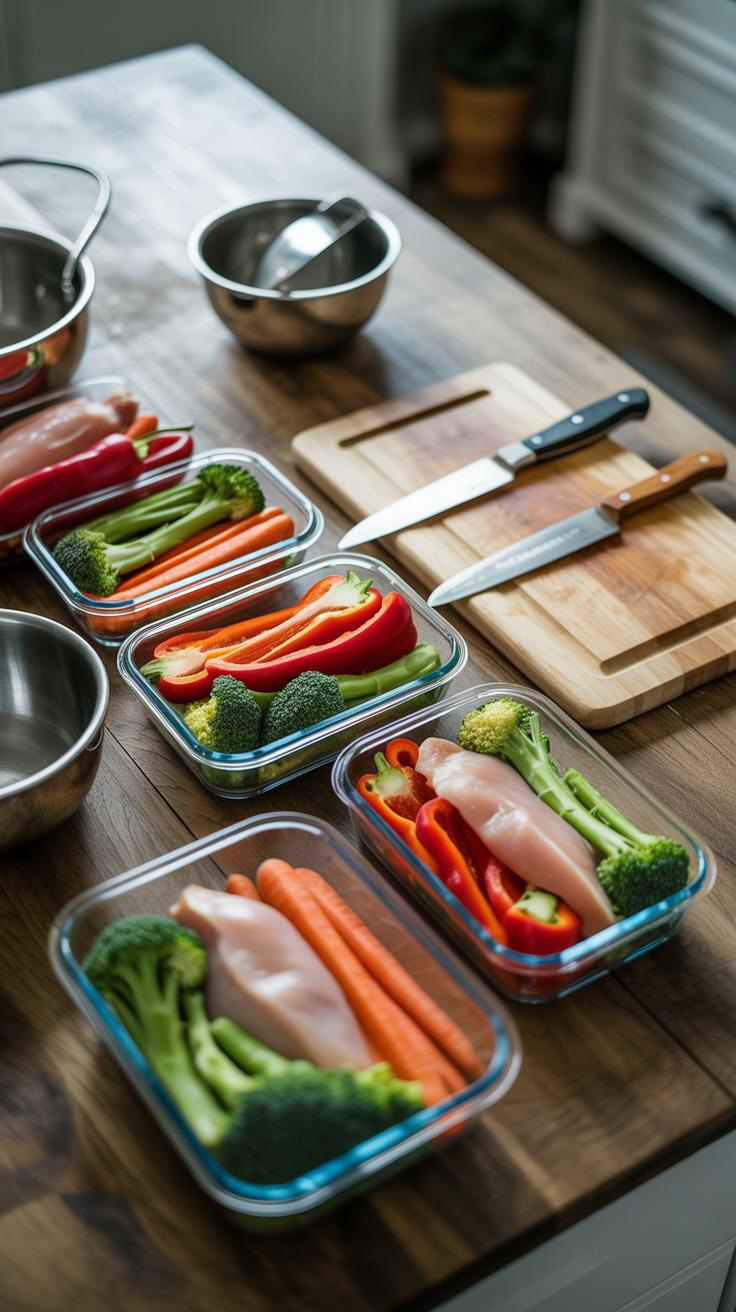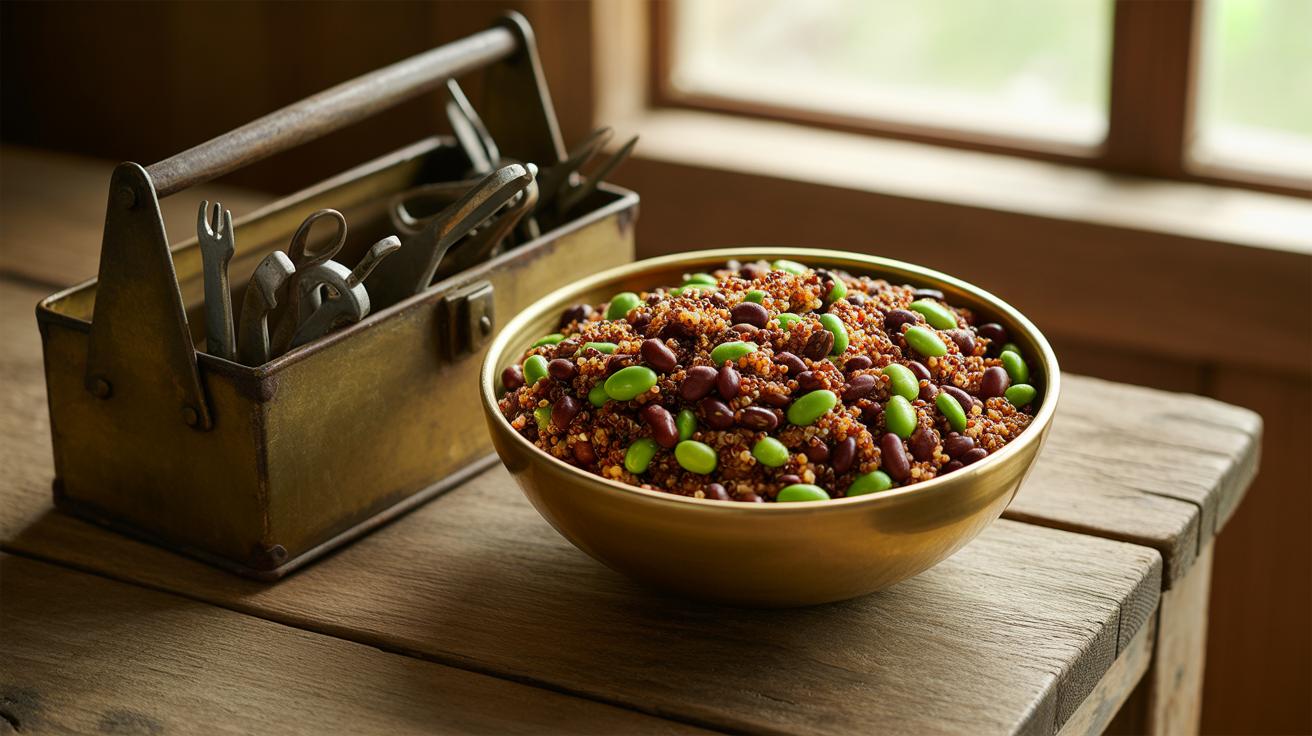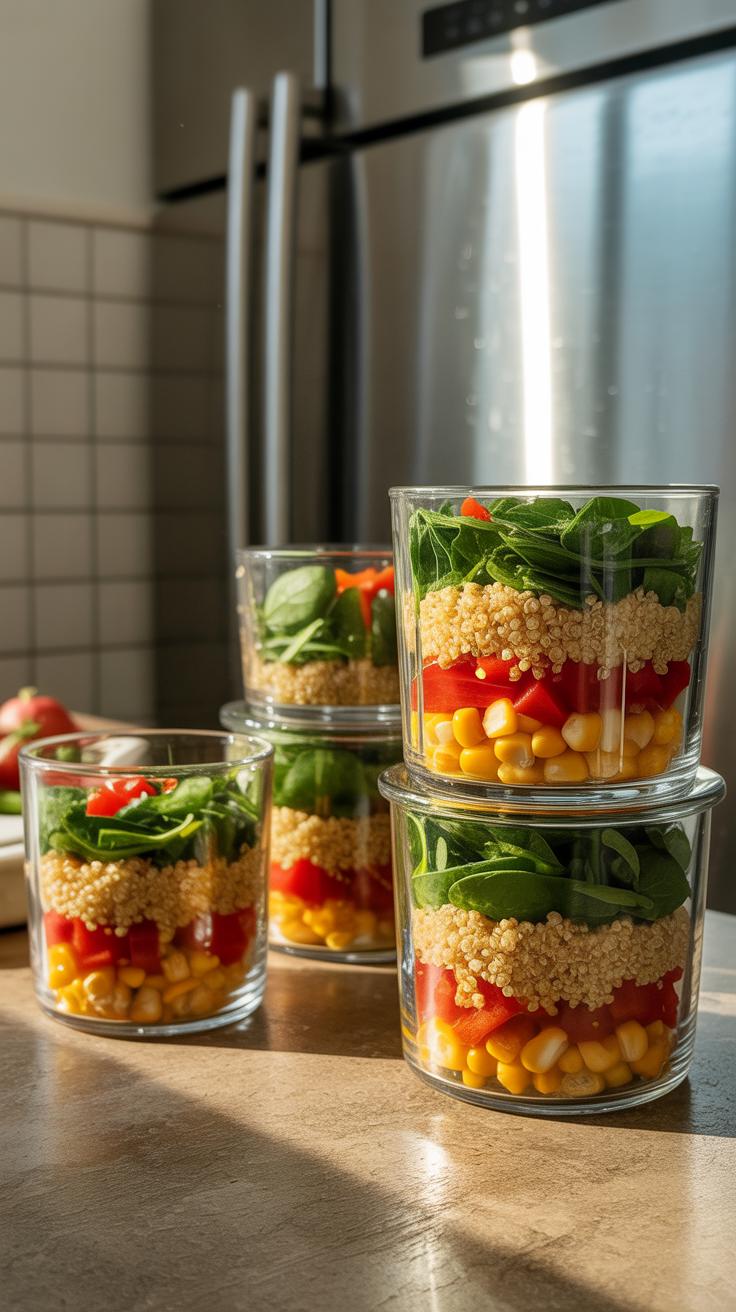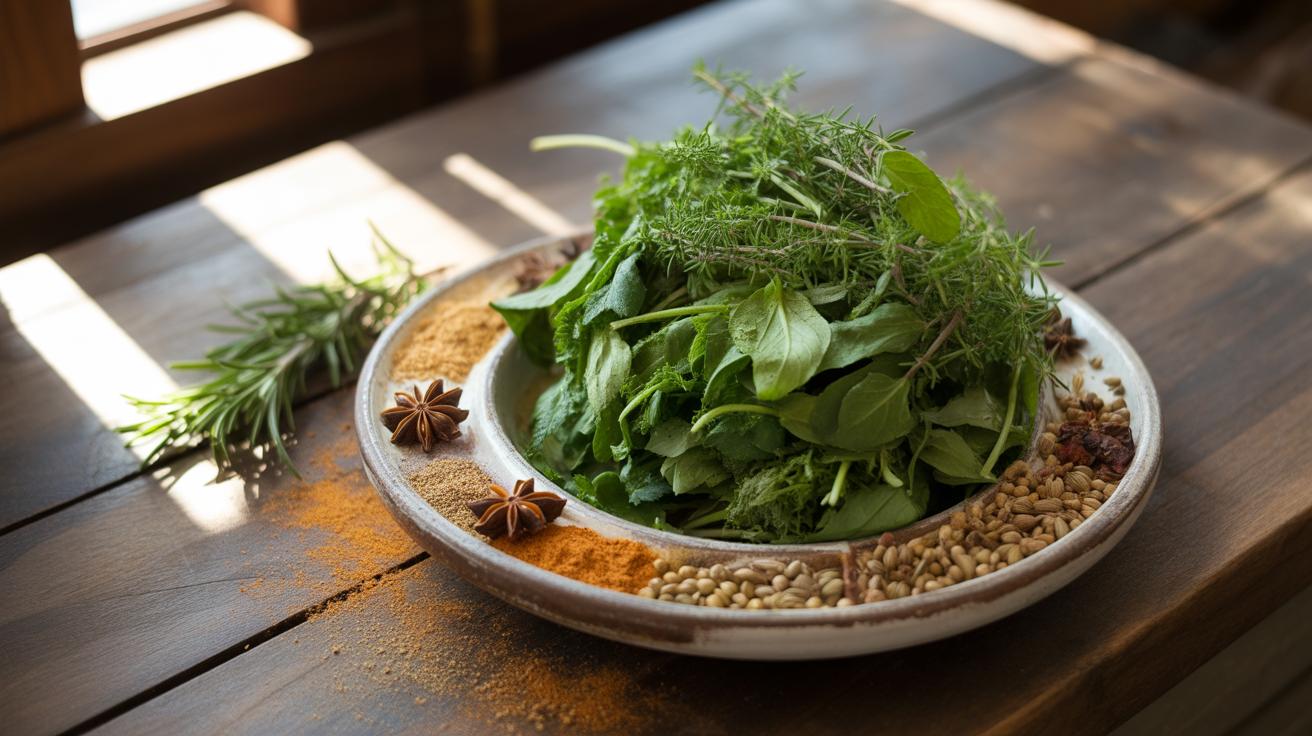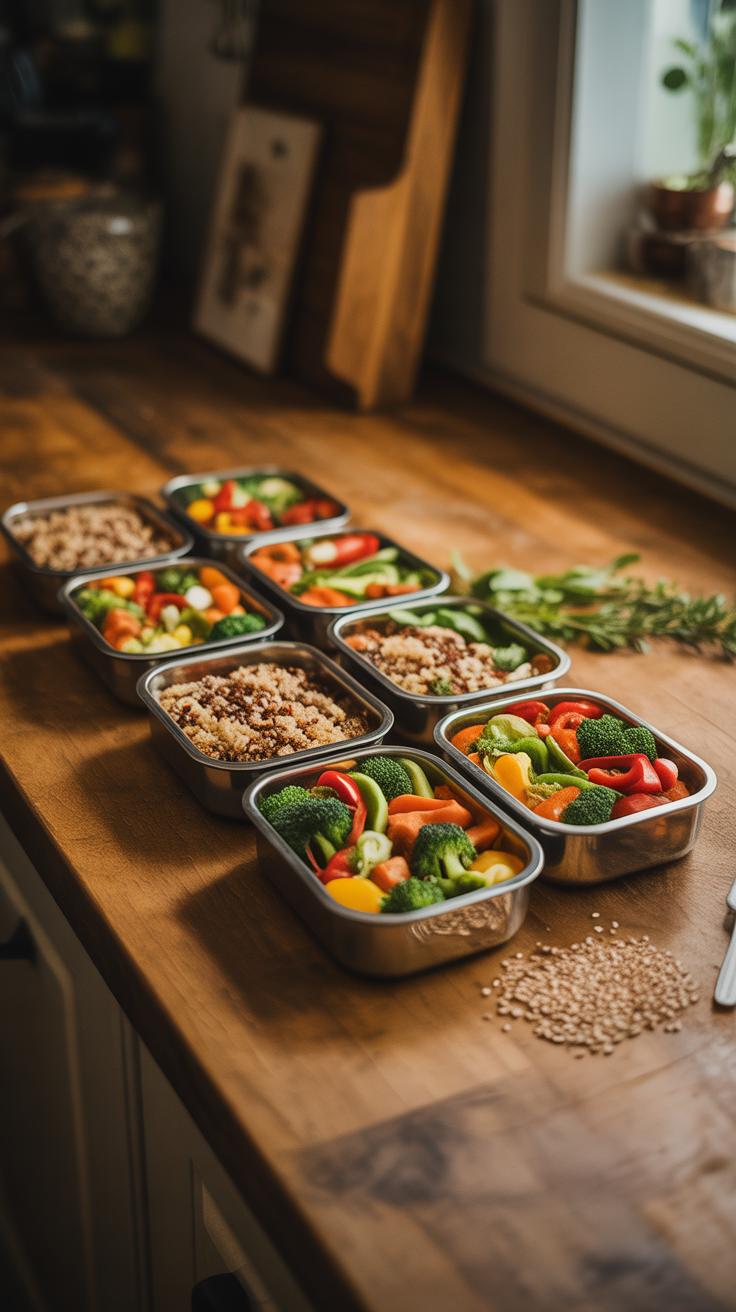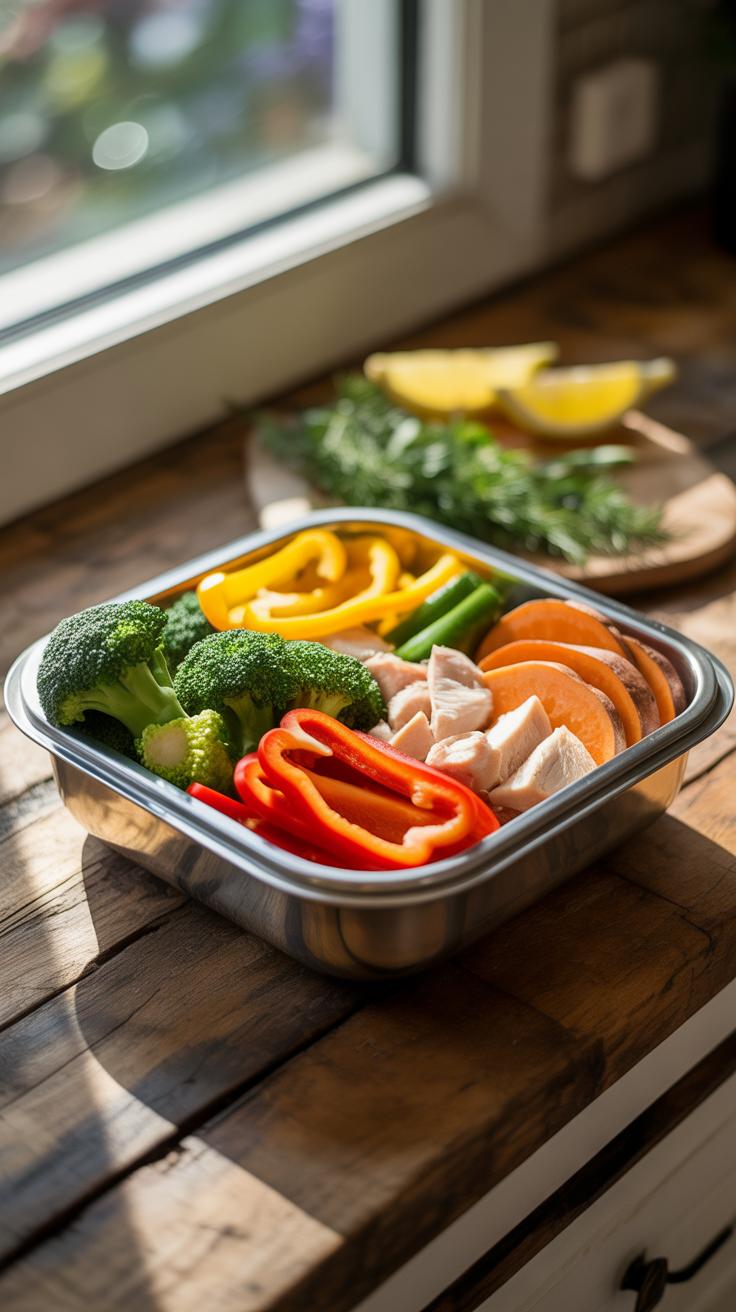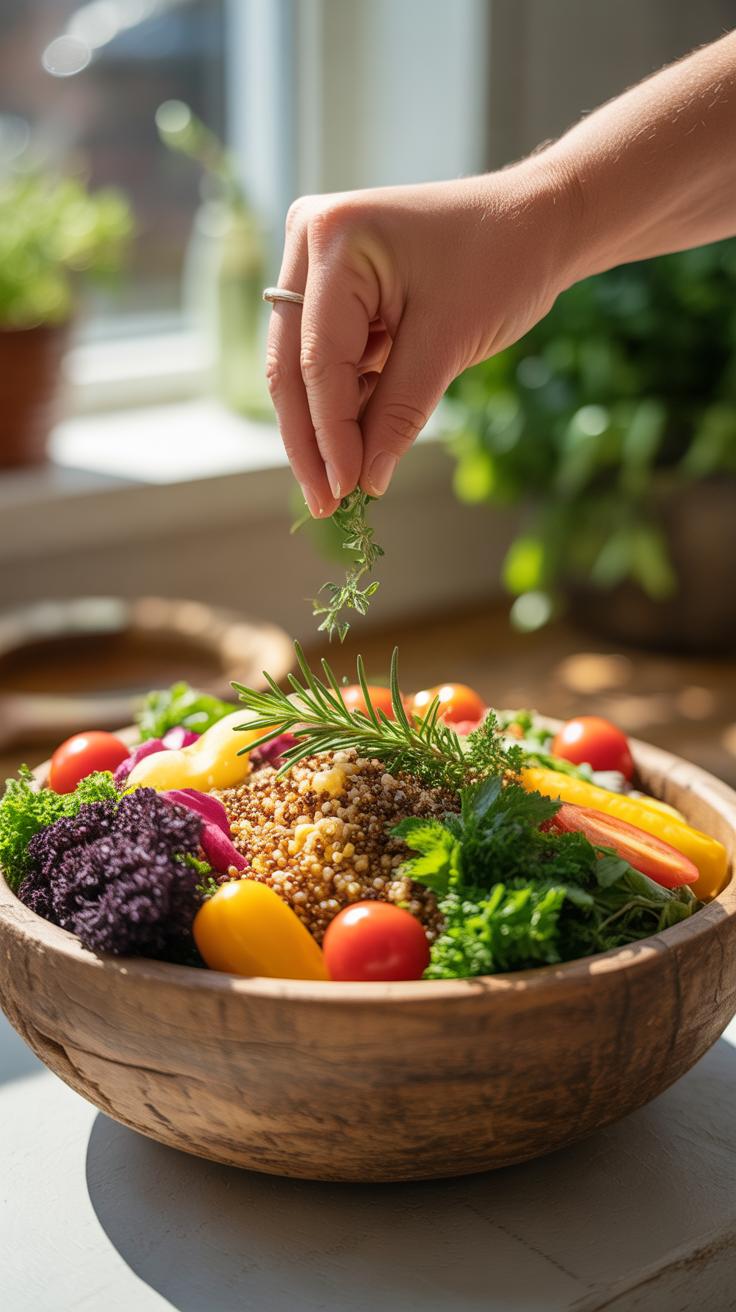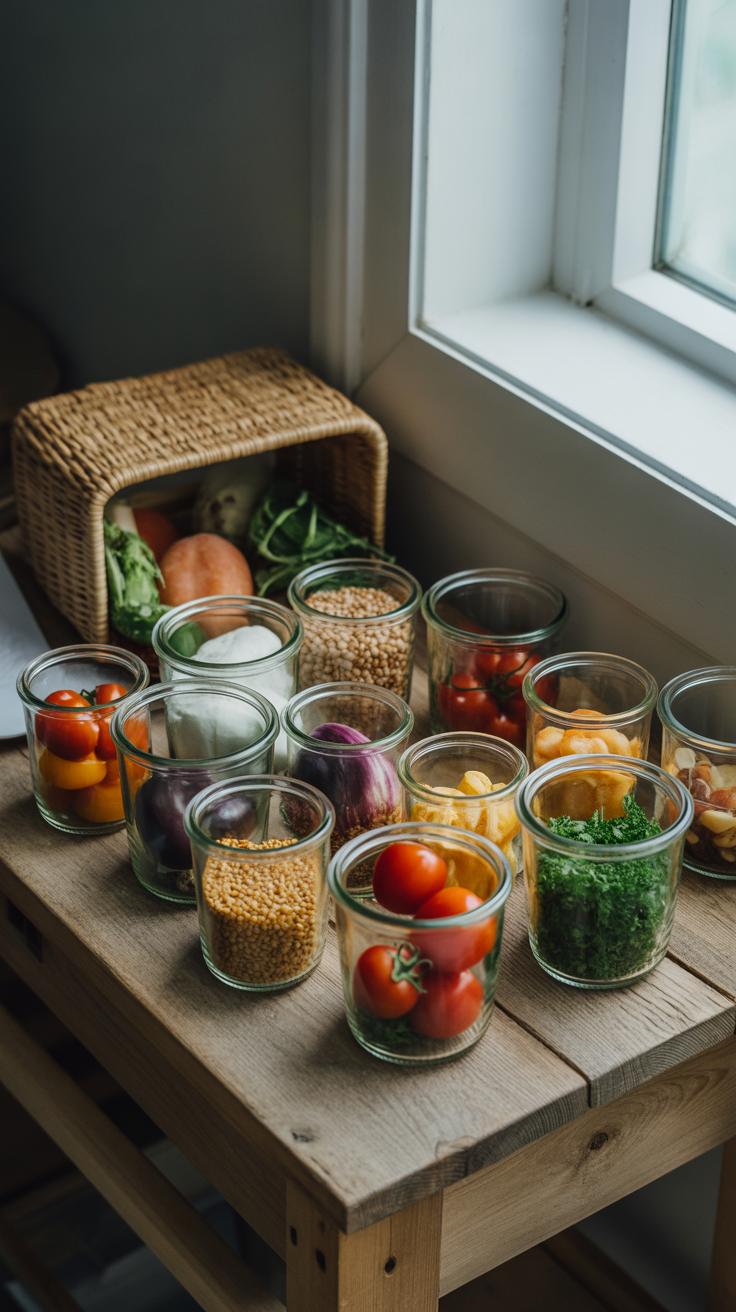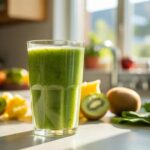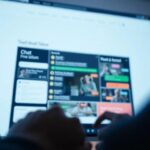Introduction
Simple Strategies for Healthy Lunch Meal Prep That Actually Work can help you save time, money, and improve your diet. Preparing meals ahead allows you to control what you eat and avoid last-minute unhealthy choices. Lunch is often a rushed meal that determines your energy for the rest of the day. By planning and cooking in advance, you make sure your lunch is balanced and satisfying.
This article digs into key methods for creating healthy lunches that fit your lifestyle. We explain how to select the right ingredients, the advantages of meal prep, and steps to build meals that keep you full and focused. You will find clear tips on shopping and storing food. Together, these strategies aim to make your lunch meal prep simple and effective.
Why Prepare Lunch in Advance
Meal preparation means getting your lunch ready ahead of time—often by cooking and packaging your meals so you just grab and go. It might seem like a small thing, but making lunch in advance can really change your daily routine.
Think about the time you spend deciding what to eat, preparing it, and cleaning up—all that can add up to at least 30 minutes each day. When you prep lunch ahead, you save that time during busy workdays or school days, which feels like a small win that adds up.
Money-wise, meal prepping can help cut costs. For example, Americans spend around $1,200 a year eating out for lunch. Preparing meals at home even a few times weekly could reduce that by hundreds of dollars. Also, buying ingredients in bulk and cooking in batches keeps prices down.
And health? Well, meals prepared at home generally have less salt, sugar, and unhealthy fats than takeout. That makes a difference, especially if you’re trying to eat better or manage a condition like diabetes. It’s like a reminder that spending a bit of time upfront can pay off with better food choices and more control.
What is Meal Preparation
Simply put, meal preparation involves cooking food ahead of time, then dividing it into portions for later meals. This way, when lunchtime arrives, you aren’t scrambling—you already have something ready to eat.
Common approaches include batch cooking, where you make a larger quantity of something, say a stew or roasted vegetables, then store it in the fridge or freezer. Another method is portioning meals into containers—maybe a compartmentalized lunch box—that keeps everything fresh and easy to grab.
Many people find that prepping ingredients separately, like chopping veggies or cooking grains in advance, works too. You combine these components quickly at lunch. Packaging for meal prep often means using plastic or glass containers, sometimes with compartments to keep food from mixing.
It might sound a bit rigid, but meal prep actually allows some flexibility—you prepare basics, then add fresh or quick-to-make sides right before eating, which keeps things from feeling repetitive or boring.
Health Benefits of Prepping Lunch
One major advantage of prepping lunch ahead is having better control over what goes into your meals. When you cook yourself, you choose fresh ingredients, avoid excess salt or sugar, and keep portions reasonable.
This can influence health over time. For instance, meal prep helps manage blood sugar levels by preventing haphazard snacking or overeating high-calorie fast food. Studies have linked regular home-cooked meals to better nutrient intake and lower risk of metabolic issues like diabetes.
People who meal prep often report feeling more energetic and less weighed down during the day. You avoid the temptation of grabbing whatever’s convenient—sometimes less healthy—just because you don’t have time to plan.
It’s not perfect for everyone, though. Sometimes life gets in the way, and you might revert to old habits. But even occasional prep can nudge your diet in a better direction, which is better than nothing.
Choosing Nutritious Ingredients
When you’re picking ingredients for lunch, focusing on whole foods can make a big difference. Whole foods—those that are close to their natural state—usually pack more nutrients than heavily processed options. Think fresh vegetables, whole grains, and unprocessed proteins. These foods tend to provide a better balance of vitamins and minerals, which your body needs to keep going through the afternoon slump.
Vegetables, in particular, should take up a good chunk of your lunch. They’re low in calories but high in fiber and micronutrients. Fiber helps with digestion and keeps you feeling full longer, which might help avoid that mid-afternoon snack attack. Don’t just settle for one type; the more color on your plate, the better—each color usually means different nutrients.
Lean proteins—like chicken breast, tofu, or fish—are another key piece. Protein keeps your muscles fueled and your metabolism steady. At the same time, healthy fats, such as those found in avocados, nuts, or olive oil, support brain health and help your body absorb fat-soluble vitamins. Yes, fats aren’t the enemy, even if they sometimes get a bad rap.
So, how do you spot truly nutrient-dense foods at the market? Try these simple checks:
- Choose items with minimal ingredient lists—avoiding those packed with strange additives
- Look for fresh, firm produce rather than limp or discolored options
- Pick whole grains over refined ones, like quinoa instead of white rice
- Check labels for lean cuts of meat or protein sources with little added sugar or preservatives
Don’t get overwhelmed if some labels confuse you. Often, simply choosing foods that you recognize and can pronounce is a decent guide. When in doubt, fresh and simple usually wins.
Tools to Aid Meal Prep
Best Containers for Storage
Choosing the right containers can make or break your lunch prep routine. Glass containers are a solid bet if you want something that won’t stain or retain odors. They usually handle reheating well, too, but can get a bit heavy for daily carrying. Alternatively, BPA-free plastic containers are lighter and often come with secure lids that prevent spills, which might be better if you’re often on the go.
When it comes to size, I find containers around 2 to 3 cups useful for portion control—they fit a balanced meal without temptation to overload. Smaller containers for snacks or dressings are handy, too, so nothing gets soggy. The shape matters, too: square or rectangular containers stack better in the fridge and lunch bag, though round ones sometimes fit awkwardly.
Useful Appliances for Meal Prep
Appliances can bluff their way into being real time-savers, but only if you pick the right ones for your meals. Take the slow cooker: it’s perfect for throwing in ingredients early and returning to ready-to-eat dishes. I know it sounds slow, but it frees up your hands and mind throughout the day. You can cook soups, stews, or even grains without much fuss.
Rice cookers are underrated for meal prep because they don’t just make rice—they can steam veggies or even cook quinoa with minimal babysitting, saving you from juggling multiple pots.
Microwaves get a bad rap sometimes, yet they are indispensable for quickly reheating meals. Some newer models have sensor controls that avoid overheating, which can help keep your food moist instead of dried out. Don’t underestimate the simple power of this appliance when under tight schedules.
Simple Meal Prep Processes
Start by mapping out your week. Look at your calendar and think about when you’ll have time to prep and when you’ll need quick lunches. Pick meals that you actually want to eat—this isn’t about forcing yourself into bland options but finding what fits your taste and routine. Choosing ingredients that can work for multiple meals, like grilled chicken, roasted veggies, or quinoa, helps reduce both prep time and food waste.
Next, make a shopping list focused on these versatile foods. Stick to fresh produce, lean proteins, and whole grains. Try not to overwhelm yourself with too many new ingredients—keeping it simple means you’re more likely to follow through. When shopping, aim for durable items that last through the week but don’t forget to plan a midweek fresh pick-up if you need it.
When you get to cooking, batch cook your main dishes. Think big pots of chili, trays of roasted veggies, or grains like rice or barley made in one go. Portion immediately into containers sized for your meals. This way, you don’t have to think about it later—grab and go. Protect freshness by cooling food before sealing containers and store meals in the fridge or freezer depending on when you’ll eat them. Labeling containers can help, especially if your memory is like mine and you forget when something was made.
Healthy Lunch Examples to Try
Let’s look at a couple of lunch ideas that are simple to prepare and healthy enough to keep you going through the afternoon. They combine good protein, whole grains, and plenty of vegetables—so you get a balanced meal that’s not boring.
Protein-Packed Salad Bowl
One example is a salad made with mixed greens like spinach and arugula, grilled chicken breast, a handful of nuts such as walnuts or almonds, and a drizzle of olive oil with lemon juice for dressing. You can toss in some cherry tomatoes or cucumber for crunch.
This meal works because it hits several crucial points: lean protein from the chicken supports muscle repair; nuts add healthy fats and a bit of extra protein; greens provide fiber, vitamins, and minerals; and the light dressing keeps it flavorful without weighing you down. I find this kind of salad surprisingly filling, probably because of the nuts and protein combo. It’s also flexible—you could swap chicken for turkey or chickpeas if you want.
Grain and Veggie Stir-Fry
Another option is a stir-fry using cooked brown rice as a base, with mixed veggies like bell peppers, broccoli, and snap peas—all quickly cooked in a pan with tofu or lean meat such as chicken or shrimp. Use just a teaspoon or so of oil, and season sparingly with garlic, ginger, or a splash of soy sauce.
This dish is straightforward to prepare, and you can make a bigger batch for multiple days. Brown rice gives you complex carbs for energy and fiber. Vegetables bring color, crunch, and nutrients. Protein from tofu or meat rounds it out to keep you satisfied.
Stir-fries are great because you can swap ingredients based on what’s fresh or what you prefer. Sometimes I switch tofu for chicken thighs instead of breast—more flavor, less dry, though maybe a bit more fat. Would you try variations like that?
Avoiding Common Pitfalls
Meal prepping lunches sounds straightforward until you hit a few bumps that make it less enjoyable or even frustrating. One big issue is boredom. Eating the same chicken and rice every day quickly becomes dull, and that’s probably why many people give up. You might start craving takeout or just skip lunch entirely, which defeats the purpose. To keep things from getting stale, try rotating between a handful of base recipes rather than repeating the same one all week. Swap spices or sauces to shift the flavor; a smoky paprika blend feels very different from a bright lemon-herb dressing. Small tweaks can make a surprising difference.
Food spoilage is another common snag. Sometimes meals sit too long before refrigeration or containers aren’t sealed tight enough, leading to sogginess or off flavors. Cooling cooked dishes quickly by spreading them out thinner on a tray before refrigerating helps. Using airtight containers keeps moisture and air out, which prolongs freshness. Plus, it cuts down on unwanted fridge smells mingling with your lunch. I’ve noticed my salads last longer when the dressing stays separate until just before eating. That little extra step might seem fussy, but it really pays off.
And then there’s inefficient prep. Spending hours in the kitchen only to find half the meal goes to waste or you need multiple cooking steps drains motivation. Planning ingredients that overlap across meals can avoid unnecessary chopping or cooking. For example, roasting a batch of vegetables that work in both a grain bowl and a wrap saves time. Also, grouping tasks—like chopping everything before turning on the stove—keeps the process smooth. You might think multitasking isn’t your thing, but small systems like these often make the whole week easier.
Comparing Meal Prep vs Eating Out
Cost Differences Explained
Preparing lunch at home usually costs less than buying from a restaurant or ordering takeout. If you pick versatile ingredients like rice, beans, and seasonal vegetables, a week’s worth of lunches might run you around $20 to $30. In contrast, grabbing lunch out every day can quickly add up to $50 or more — sometimes even double, depending on where you go.
Buying in bulk or choosing store-brand items further cuts costs. But it’s not only about money—it’s also about what you get for that money. You’re paying more at restaurants for service, ambiance, and convenience, which food prep doesn’t offer.
Nutrition and Time Comparison
Meal prepping lets you control what goes on your plate. You can balance proteins, fats, and carbs better than most fast-food places. Plus, you generally avoid excess salt, sugar, and preservatives. That said, prepping meals takes time upfront. Some people find the weekend cooking sessions relaxing. Others might feel it’s just another chore added to their to-do list.
Eating out saves prep time but often costs you in nutritional quality. Fast food tends to be high in calories but low in essential nutrients. That doesn’t mean all restaurants are unhealthy. Some spots serve fresh salads or grilled options, but they may still come with bigger portion sizes or added fats. Plus, your schedule might not always match restaurant hours, while a packed lunch is ready when you need it.
So, think about what matters most to you: saving money and eating well, or gaining convenience and saving a few minutes each day. The best choice is the one you can stick with over time. What’s your lunch look like usually? Does either fit comfortably into your week?
Tracking Your Lunch Meal Progress
Keeping track of your lunch meal prep isn’t just about sticking to a plan—it’s about noticing what actually works for you. You might start with a schedule but soon realize that some meals leave you sluggish or that your prep time stretches too long on busy days. Paying attention to a few simple metrics can help you tweak your approach without feeling overwhelmed.
Try monitoring these markers:
- How many meals you prep each week—are you hitting your target or falling short?
- The total time you spend prepping—does it fit into your routine or cause stress?
- How satisfied you feel after lunch—do you get full or hungry too soon?
- Your energy levels post-meal—are you alert and productive or dragging through the afternoon?
- Meal variety—are you eating the same dishes repeatedly, or mixing it up enough to stay interested?
If something feels off, don’t hesitate to change it. Maybe you need to prep fewer meals but more substantial ones, or switch from dishes that require long cooking to quicker S ones. Sometimes, experimenting with new recipes, different ingredients, or adjusting portion sizes can help. For example, doubling your protein or adding more veggies might make a real difference in how you feel.
Remember, meal prep isn’t set in stone. It’s okay to pause, reflect, and try something fresh. You might ask yourself: Does my current plan fit my energy patterns? Am I enjoying what I eat? If not, it’s time for a little adjustment. Tracking progress isn’t just about numbers, but also how your body and mood respond. That feedback loop? It’s key to finding a routine that really works for you.
Meal Prep on a Budget
Prepping healthy lunches doesn’t have to drain your wallet. There are several ways to keep costs low while still making meals that are both nutritious and satisfying. It’s easy to get caught up thinking fresh produce always means high prices, but frozen vegetables often pack just as much nutrition. They last longer too, which cuts down on waste—a win-win if you ask me.
When choosing ingredients, think about staples that stretch a long way. Beans, for instance, are cheap and loaded with protein and fiber. You can toss them into salads, soups, or wraps without much effort. Whole grains like brown rice or oats are filling and inexpensive, making them perfect base layers for many meals.
Shopping smart goes beyond just picking items. Watching for sales and using coupons can save more than you’d expect, especially if you plan your meals around those deals. Bulk buying works well for dry goods and frozen items, but it takes a bit of planning so nothing goes bad. Sometimes, I find myself buying something just because it’s on sale, only to realize I haven’t figured out a good use for it yet—so maybe don’t do that.
Also, comparing unit prices rather than the total price helps spot true bargains. A larger package isn’t always cheaper per serving. Finally, think about versatile ingredients that fit several recipes—it keeps your shopping list short and your budget intact. Have you tried buying a big bag of frozen mixed veggies and using it across soups, stir-fries, and pasta? It saved me multiple trips to the store and a bunch of money in one go.
Conclusions
Healthy lunch meal prep can change the way you eat each day. By picking nutritious foods and preparing your meals in advance, you minimize unhealthy choices and stress during busy hours. The strategies explained here focus on practical actions like ingredient selection, proper storage, and quick recipes that fit your schedule.
You can use meal prep to save money, reduce waste, and improve your health. Applying these ideas step-by-step lets you build new habits with less effort. This approach keeps your lunches balanced and helps you reach your personal health goals without extra fuss.
